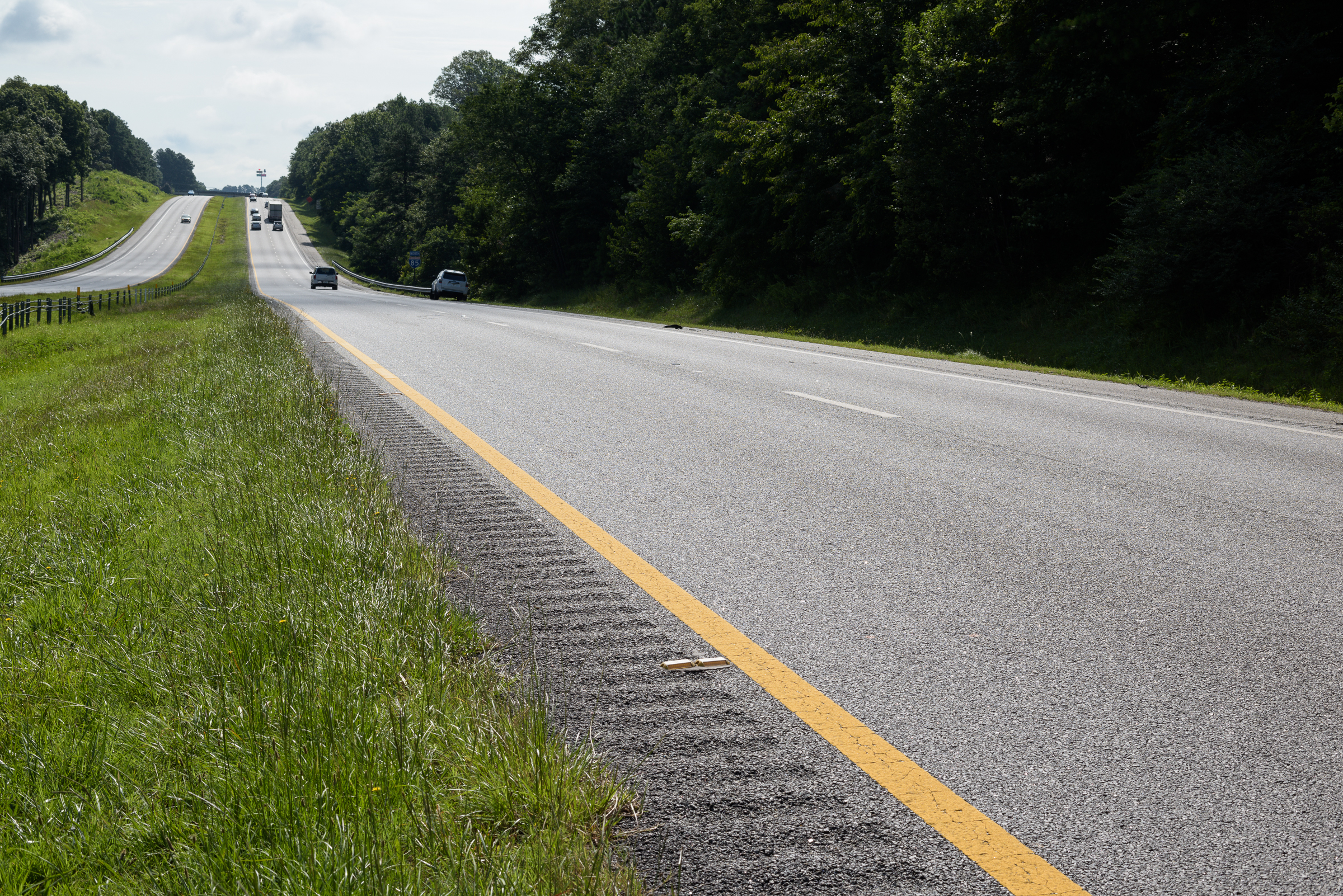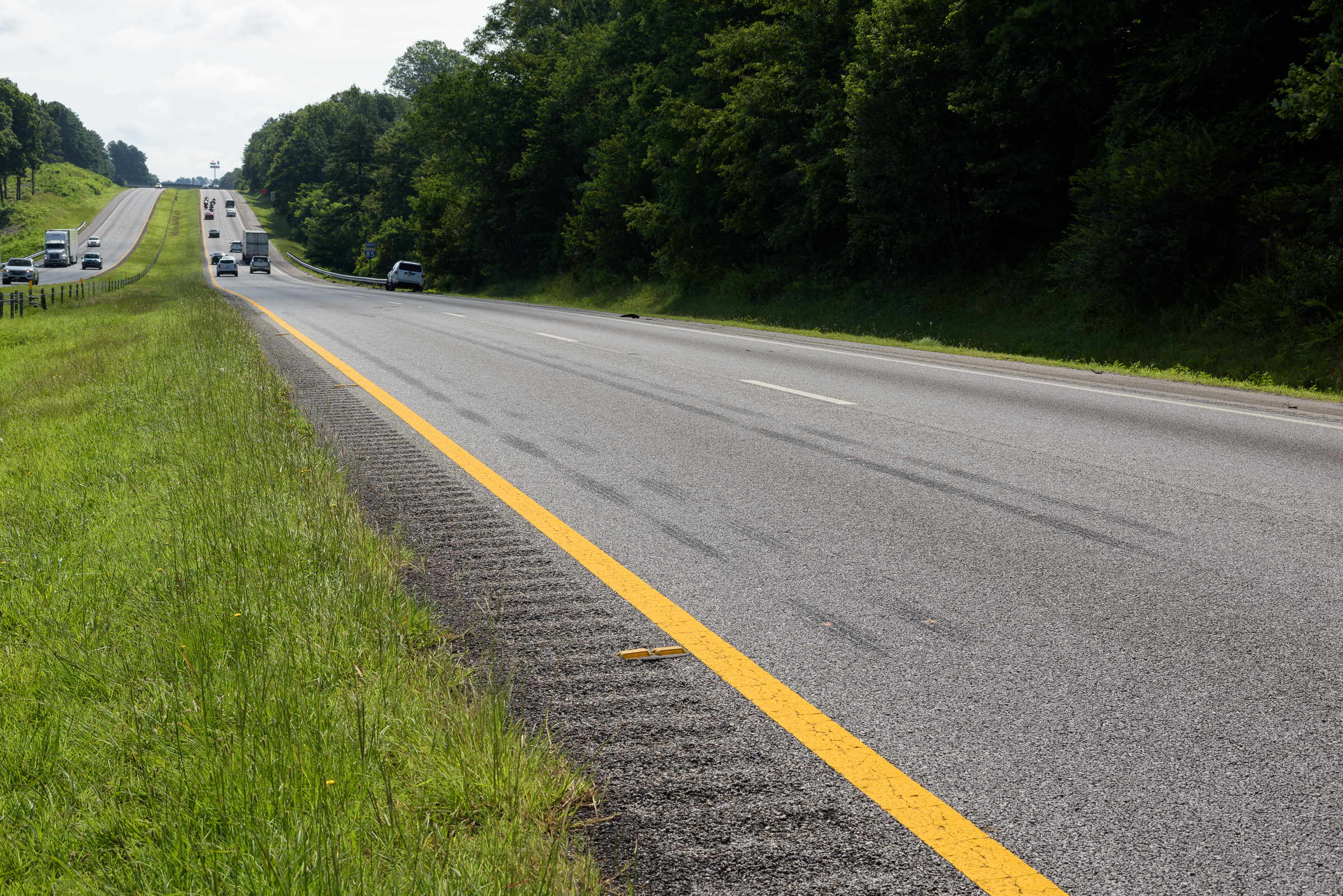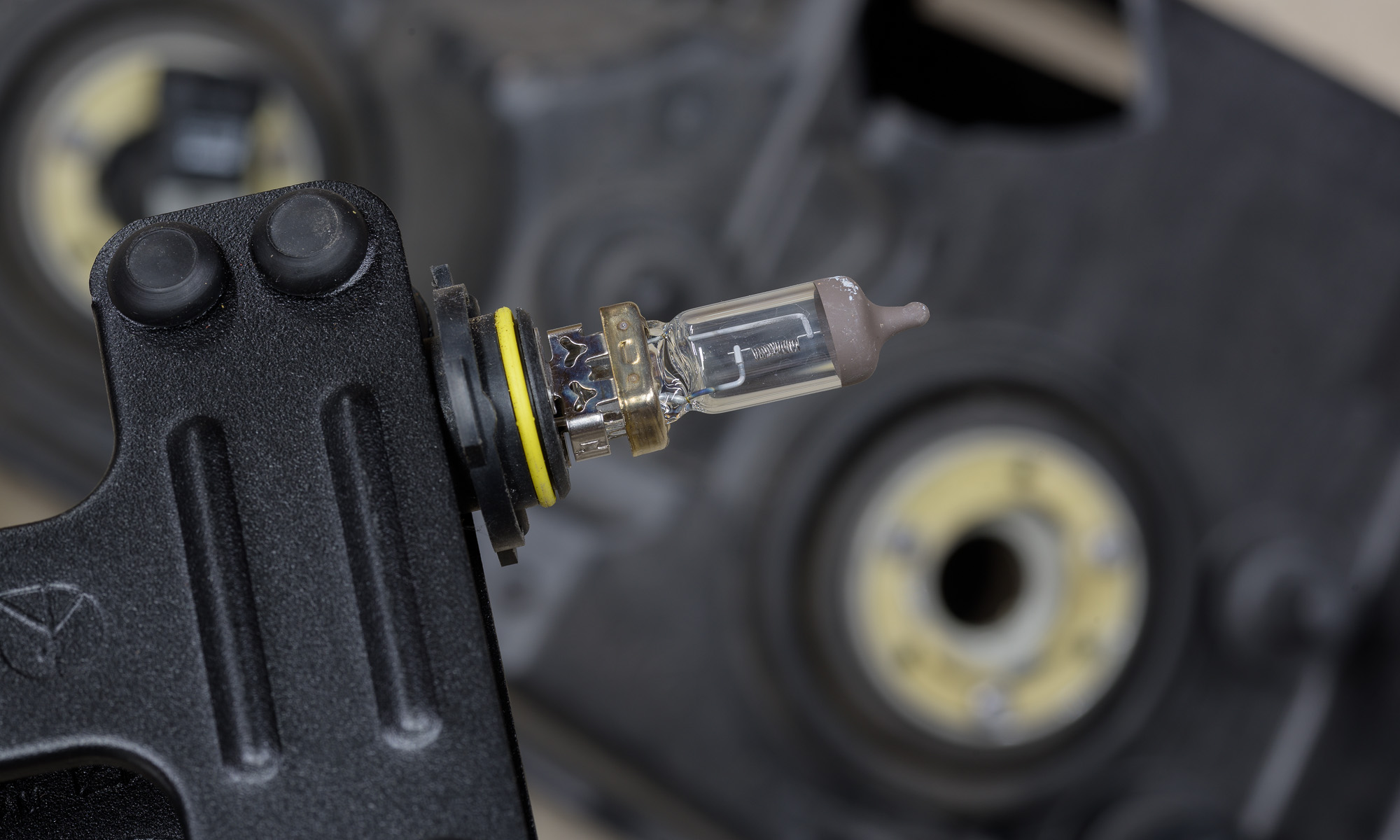In a post last year, I showed an example illustrating the importance of using a polarizing filter when photographing skidmarks at a wreck site. As you rotate a polarizer while looking through it, you can watch the glare either move or disappear entirely, depending on the subject and the angles involved.
Below is a photograph of two lanes on an Interstate that don’t appear to have any tire marks. (Click on photo to enlarge, then click back arrow to return to post.)

No tire marks were visible to the naked eye either, but they could be seen through polarized sunglasses.
Just adding a polarizer on a lens might not have any effect until it is rotated. It cannot be said enough: You must rotate a polarizer before every shot if you’ve moved the camera even a little bit. Fortunately, the effect is easy to see looking through the filter before putting on to your lens, or through the viewfinder or when using Live View once it’s on the lens.
Here is the same view using a polarizer rotated for maximum effect (Click on photo to enlarge, then click back arrow to return to post.):

In this example, if I hadn’t used a polarizer, I couldn’t have captured the skidmarks shown here. Also notice there is now enough contrast that you can see the police paint marks in the tire marks.
Most polarizers lose between one and two stops of light. Because polarizers are dark filters—like polarized sunglasses—you must compensate for that loss of light by increasing your exposure by opening your aperture (losing depth of field) or slowing your shutter speed (making it harder to handhold) or raising your ISO sensitivity (adding noise and reducing dynamic range). A one-stop polarizer costs more money, but it is money well spent—especially when light levels are low (like on overcast days and near sunrise or sunset). Note that since I always use a tripod, I always choose a slower shutter speed, since the camera will remain steady no matter how slow the shutter speed is.
Next to a camera and lens, a tripod and a polarizer are your two most important tools for outdoor photography, especially accident sites and buildings.
